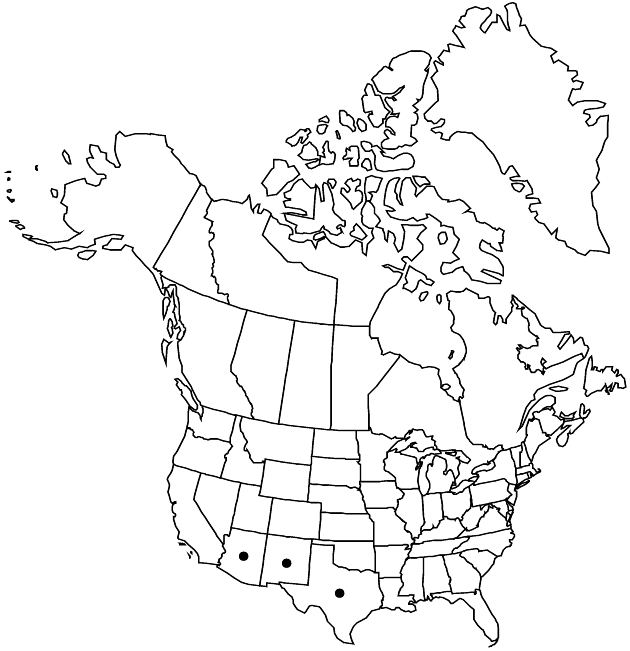Erigeron versicolor
Sida 9: 225. 1982.
Annuals or rarely short-lived perennials, 12–50 (–80) cm; taprooted or rarely fibrous-rooted. Stems (single or multiple from bases) usually basally ascending, strigose to villous, often slightly and minutely stipitate-glandular near to heads. Leaves basal (usually not persistent) and cauline; blades narrowly lanceolate to oblanceolate, basal (5–) 20–50 × 3–9 mm, cauline gradually reduced distally, margins entire or proximal shallowly crenate to serrate with 1–3 pairs of teeth, faces sparsely strigose, eglandular. Heads (1–) 5–ca. 100. Involucres 2.5–4 × (3–) 5–9 mm. Phyllaries in 2–3 series (margins scarious at least in inner), sparsely hirsute, minutely glandular. Ray-florets 60–110; corollas white, 2.5–5 (–7) mm, laminae not reflexing or coiling. Disc corollas 1.2–2 mm (throats slightly indurate and inflated). Cypselae (0.5–) 0.8–1.3 mm, 2-nerved, faces glabrous or sparsely strigose; pappi: outer of minute, blunt scales or fimbriate crowns (to 0.15 mm), inner 0.2n = 18, 27, 36.
Phenology: Flowering Apr–Jun(–Oct).
Habitat: Scattered and local, open sites, usually in moist soil, edges of low or marshy areas, stream edges, ditches
Elevation: 100–400 m (2600–2900 m, Ariz.)
Distribution

Ariz., N.Mex., Tex., Mexico
Discussion
In Arizona, Erigeron versicolor grows in meadows, along creeks, and in pine-aspen-spruce areas.
Erigeron versicolor is distinguished by its annual duration, nodding buds, conic receptacles, broad phyllaries, and pappi of only minute crowns. The species appears to be disjunctly divided among three regions in the United States and Mexico (D. C. D. De Jong and G. L. Nesom 1996), and habitats vary widely. This is an unusual distribution. There is much variation in duration, root type, orientation of stem pubescence, elaboration of the pappus crown, and achene vestiture, and this morphologic variation does not appear to be strongly correlated with geography.
Selected References
None.